The transition of Mental Health cases to our city streets
The single officer in charge of mental health cases for the Garland PD is overwhelmed and overworked. Our goal was to apply UX strategy to his challenge to help find ways to keep him from burning out and make his job more manageable.
Client
Student Project at SMU UX certificate program
Team: Myself, Tamara, Dharmesh & Billy White
Presentation intro, Product design from research to conception, visualization and testing
Project Time
3 weeks
Introduction
The Garland Police were our case study for the class. Captain Patrick McCully brought the question, “How do we better manage the dramatic increase in calls we get for Mental Health?”
This challenge was a drain on officer morale and time as there was little training and the calls were complex.
The Discovery
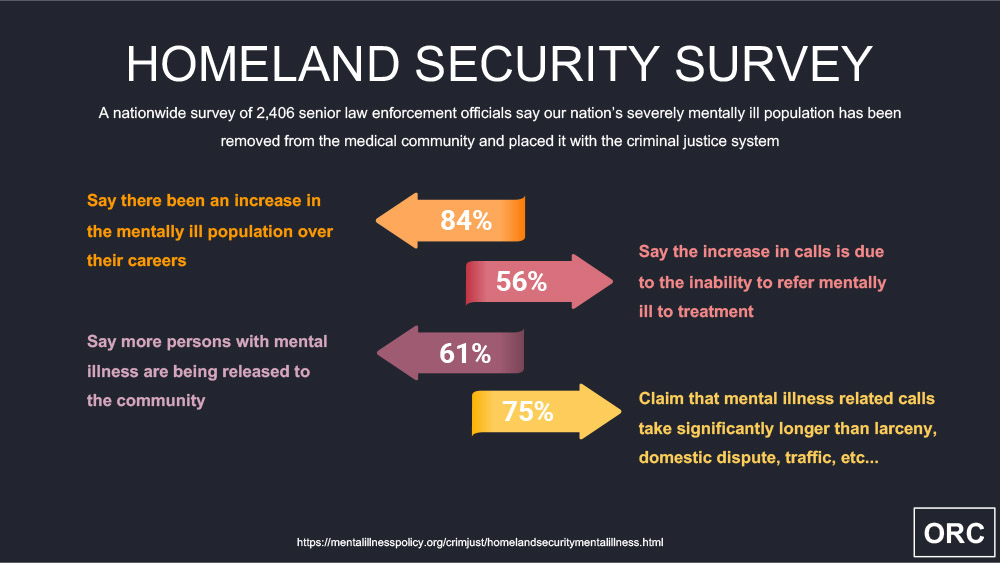
We were surprised to find out that this officer was a “force of one” with a vast responsibility for one of America’s 100 largest cities. Since the 1950’s health has moved from the medical community to the enforcement community according to Captain Patrick McCully, our liaison for the class.
The mental health officer had more ‘grey areas’ and complexity than a regular officer’s job. This challenge included: lack of updated resources, complex mental health assessment, longer call times, and more complex paperwork and the list goes on.
My research, in the slide above, showed how above trend trickled through the United States and impacted law enforcement on a daily basis.
Audience
Captain McCully and Mental Health Officer Clark and a chosen group from the Garland PD.
Our Design Process
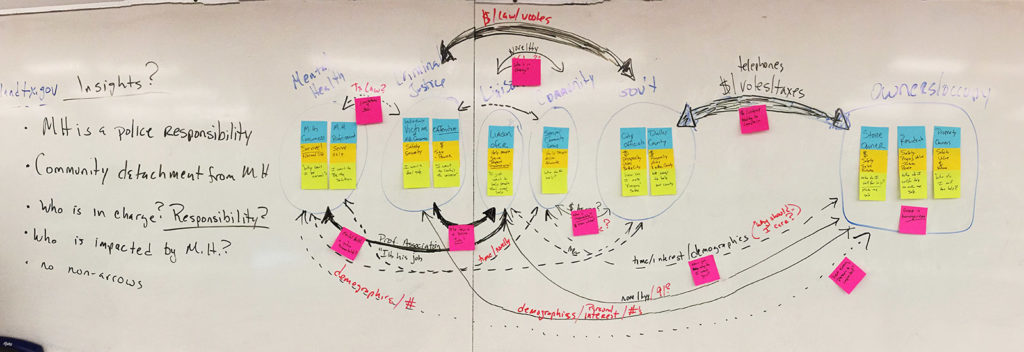
Stakeholder Map
In understanding who we were talking to we found 6 groups for our Stakeholder Map:
- Mental Health Consumers (the troubled) – They want a “Normal Life” and say “Why can’t I be normal?”
- Mental Health Professional – They want to “Serve, Help” and say “I want to be the solution”
- Victims of MH Consumers (the victims) – They want “Safety” and say “I want to feel safe”
- Offenders (sometimes control the troubled) – They want a “Sex / Power” and say “I want to control the universe”
- Liason Officer (the Garland Police MH Liason) – They want to “Help, Serve & Protect” and say “I want to help people that need help”
- Special Community Group – They want to “Advocate / Help the troubled” and say “Who do I help?”
- City Officials – They want”Prosperity / Votes / Better the City” and say “How can I make everyone safe?”
- Dallas County – They want”Prosperity / Votes / Better the City” and say “We need to help our county”
Personas
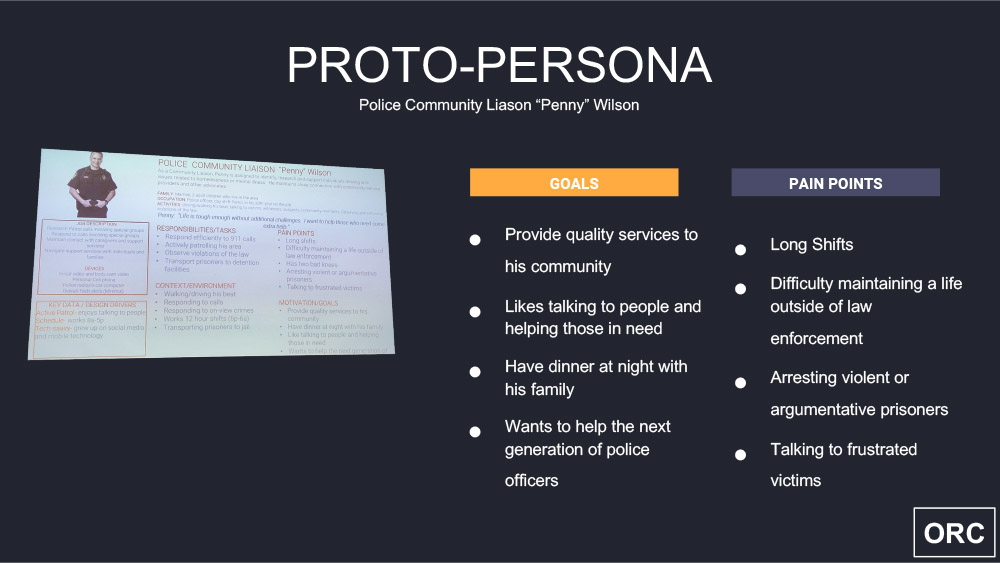
We mapped out the stages of a disturbance call to understand the Pain Points the officer goes through and how they might need to react in situations.
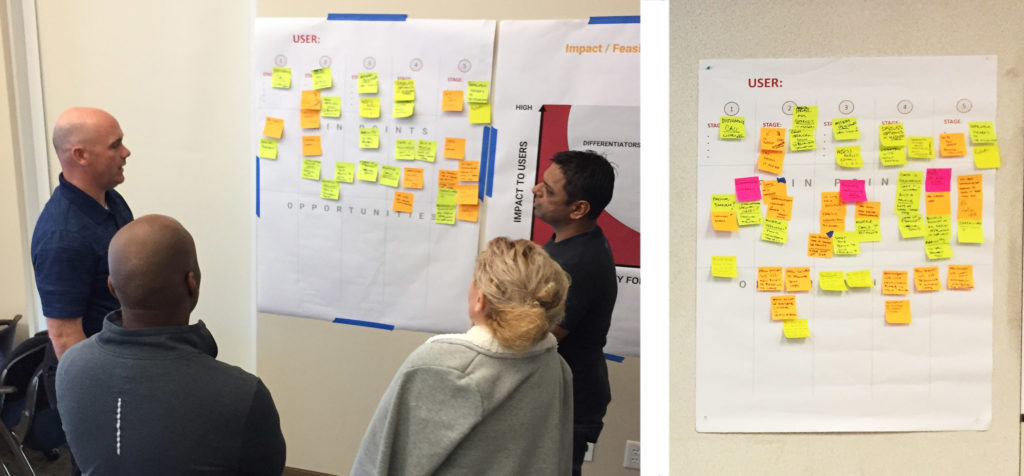
In this process with Garland Police Captain McCully we discovered the ambiguity of the homeless being a nuisance for the community versus actually breaking laws that would provoke an automatic action of arrest or detainment.
Needs Statements & Impact/Feasibility
In order to visualize and make more tangible the individual steps that a user makes during the course and its possibilities, we created a corresponding model.
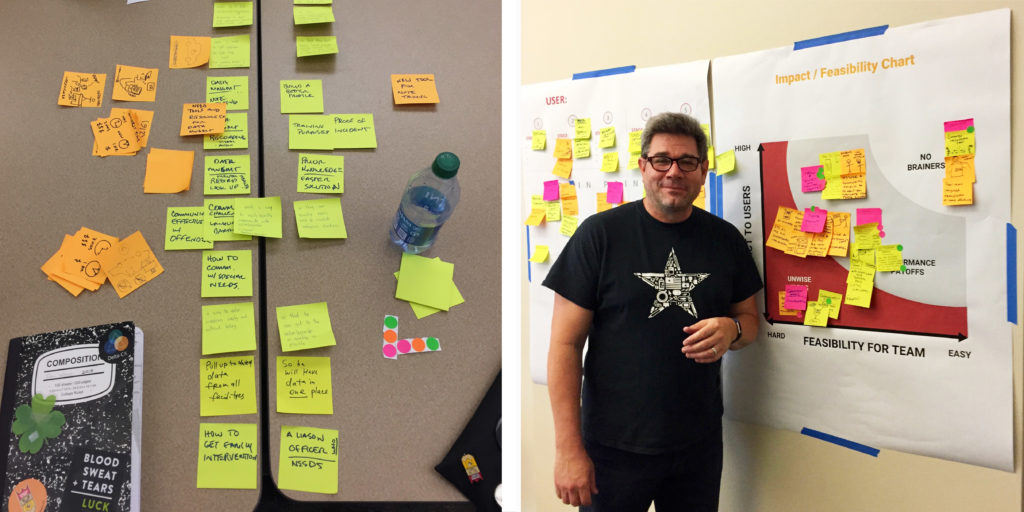
We had listened closely to Capt. McCully on the long list of daily pain points that his Mental Health officer had issues with.
This list really impacted our brainstorming helping us focus on better tools and updated resources, data management, and the overall stress that being a single officer with a mental health focus is out of 300 total officers for his city.
Empathy Map & Updated Impact Chart
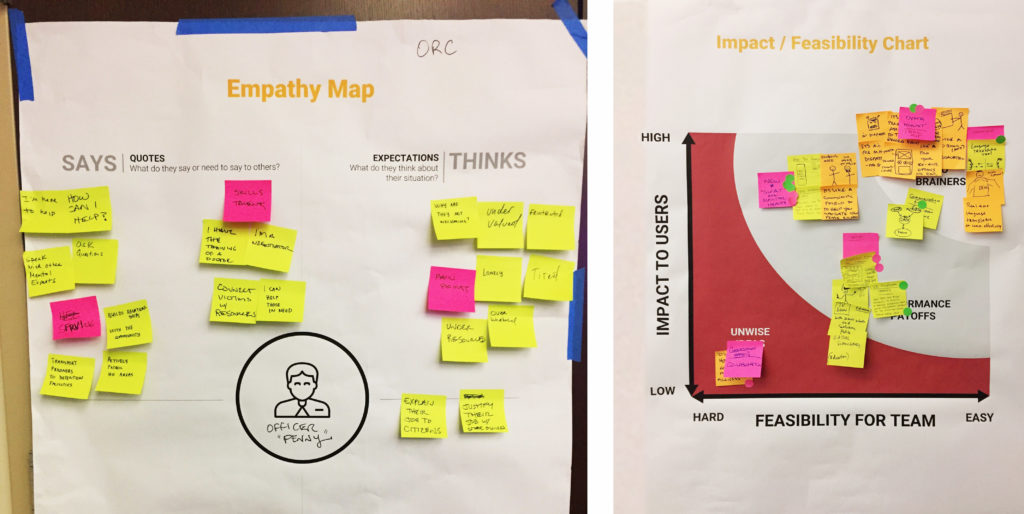
Our Empathy Map allowed us to step back from ideation and go back to the Impact / Feasibility chart and re-prioritize the tools that the Officer needed to make a positive impact on his job on a daily basis.
Our officer was overwhelmed by the lack of updated resources for the mentally ill, the long reports, lack of help and case paperwork that needed to be addressed with his duties as we identified with our 2-Minute Readout.
2-Minute Readout
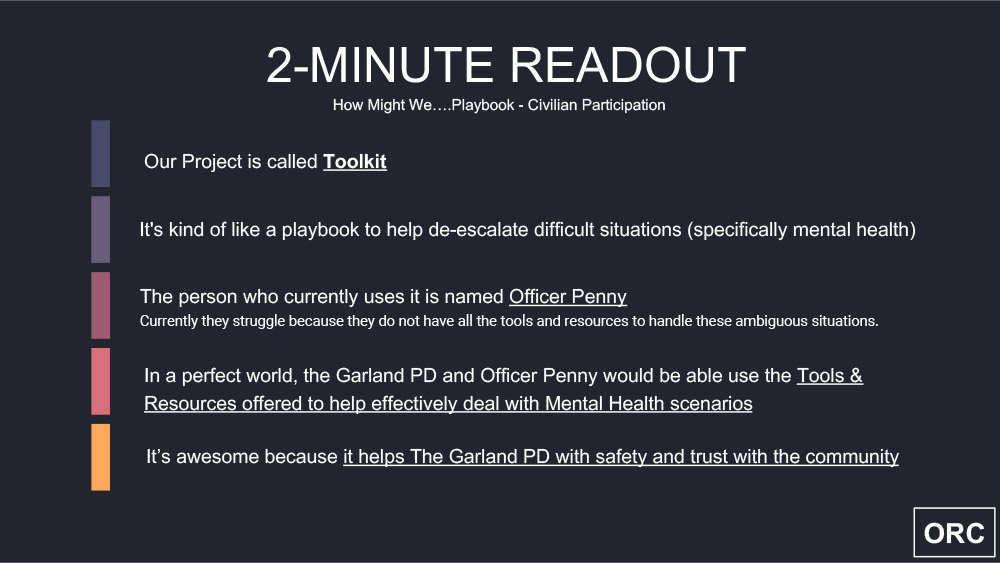
Our Empathy Map helped us to step back from ideation and go back to the Impact / Feasibility chart and re-evaluate our proposals. Our officer’s struggle helped us come up with the idea of a “Toolkit” and a multiple-pronged approach to the problem, much like an officer’s duty belt.
Their duty belt contains mace, taser, handcuffs, flashlight and finally the handgun. The situation is assessed and the proper tool used. Our solutions started to solidify around this model.
Knowing we could evolve these beginning assumptions through updated CSS / style sheets later enabled us to start the initial visualization process without too much hand-wringing over the ideal design solution.
Initial Storyboard
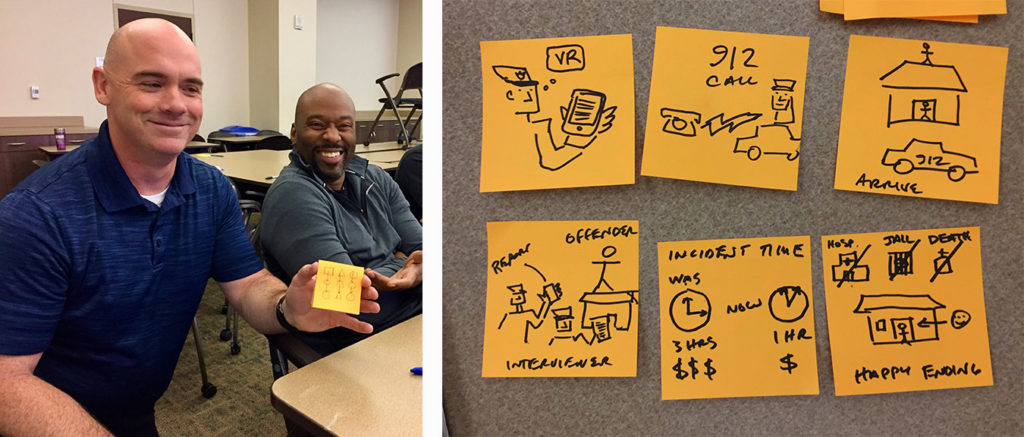
- Panel 1: a patrol officer has had Virtual Reality training in typical mental health situations
- Panel 2: the office gets a “912” call or Mental Health call
- Panel 3: Arriving at the scene they have to quickly assess the situation, did their MH training help address this situation? Do they need back-up?
- Panel 4: The MH Officer arrives to take over the situation and tag-team to ‘de-escalate’ the situation.
- Panel 5: The additional training / help an officer gets can help resolve the situation more quickly.
- Panel 6: This might help avoid the less desirable outcomes of a mental hospital, jail or even death.
Who, What, WOW & Initial Solutions

Our initial solution was to provide a comprehensive set of tools that would allow the Mental Health officer, like an officer’s duty belt.
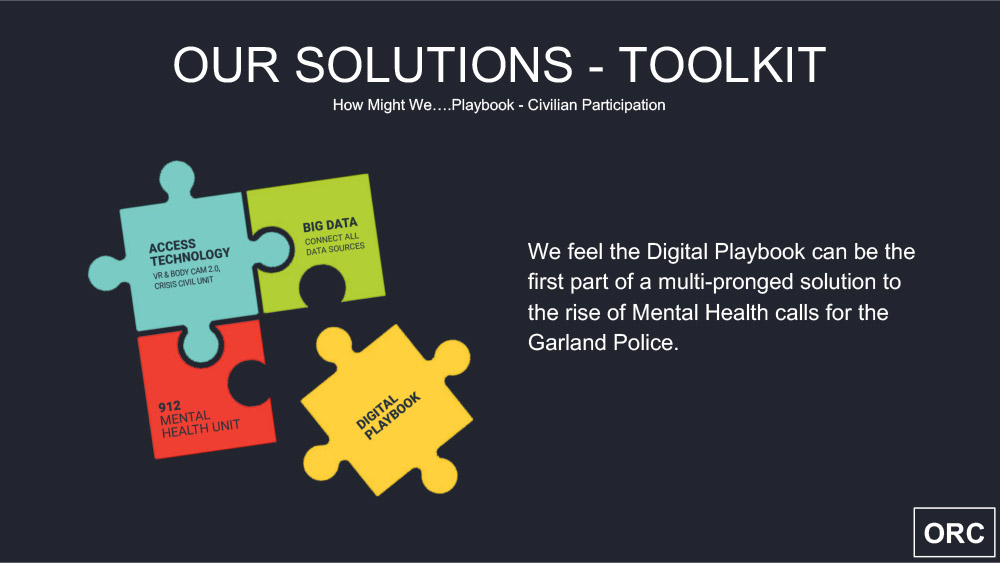
912 Mental Health – This unit would be comprised of Garland Police officers, who like their SWAT team, would have 20% of their jobs dedicated to mental health calls. This would allow our MH officer to actually have time off and regular hours.
Digital Playbook – Taking best practices and spreading them across all police officers through Virtual Reality training so regular duty officers could better handle the minor cases encountered in their daily duties.
Big Data – We would also look at a unified database of resources that could be updated independently of the MH officer to consolidate documentation for the MH audience so potentially minor issues of lack of access to medication could be solved quickly.
Validation from the Officer’s Review
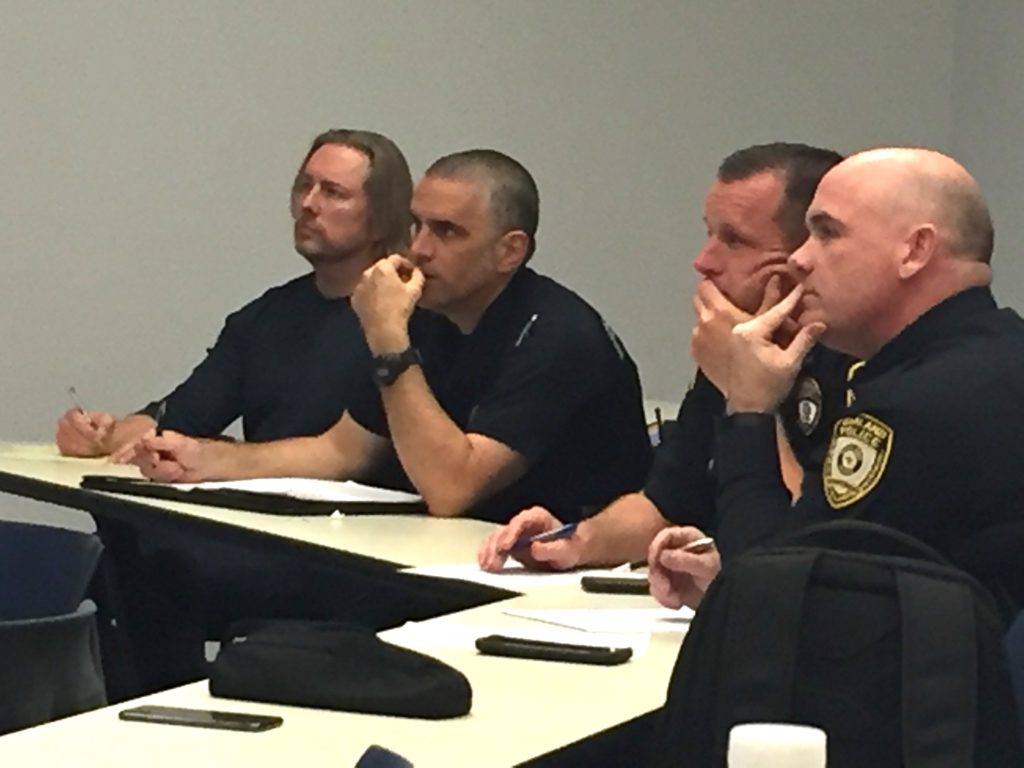
Pros
- liked how the research slide quickly set up the challenges faced by all Police depts
- liked how the 2-minute readout started to set up the solution.
- liked the idea of expanding the force of mental health officers so all shifts could be covered.
- liked how the final graphic showed officers supporting / helping each other
Cons
- didn’t like was the extra training for street-level officers. They are already challenged with many hours of training so that didn’t work for them. Specialized jobs that should remain so.
- newer officers would rather divert the mental health calls to other / appropriate resources than to do more training.
Final Thoughts
In our short 3 weeks we tried to understand and help with the challenges of Garland’s mental health officer. In follow-ups with Captain McCully and our mental health officer, we found that we had come up with good solutions that could really help him. But still might face some of the same budget challenges that he and his dept were already facing.
I felt good in that we had really addressed and validated many of our officer’s day to day concerns without even meeting him. I hope to keep in touch when they need it as their design challenges are tremendously challenging and definitely worth volunteering for.
